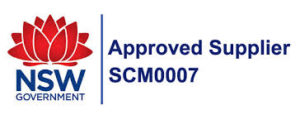 Noise is a major workplace health and safety hazard and under WHS legislation, workers must be protected from the risk of hearing loss.
Noise is a major workplace health and safety hazard and under WHS legislation, workers must be protected from the risk of hearing loss.
Hazardous noise can destroy the ability to hear clearly, making it more difficult to hear sounds necessary for working safely such as instructions or warning signals.
Excessive amounts of noise may cause temporary or even permanent hearing loss, so how much noise is too much?
A simplistic view is if you need to raise your voice to communicate with someone about one metre away, the noise is likely to be hazardous. Where noisy machinery and equipment are being used the hazard is clear, but exposure to lower levels of noise over a period of time can also be hazardous.
Safe Work Australia state “there is a big range in different people’s susceptibility to hearing loss from noise. Research shows that 8-hour average daily noise exposure levels below 75 dB(A) are unlikely to cause hearing loss.” Loud conversation is typically around 70 dB, but if you are unsure of the noise level it is best to seek advice from a professional that can monitor and calculate the exposure.
Robert Keft from the Safety Australia Group says “through well engineered noise cancelling and noise control strategies the risk of workplace noise can be managed. It is when hazardous noise levels are not addressed, people can be exposed to either permanent or partial hearing loss. This is not only life changing for the person and their family, it is also costly to the organisation through increased workers compensation premiums”.
Workplaces that require workers to wear personal protective equipment (PPE) to protect themselves against hazardous noise, must also do audiometric testing (hearing tests) within 3 months of a worker commencing and then follow up hearing tests at least every 2 years. More frequent testing may be required if noise levels are greater than 100 dB(A).
Safety Australia Group have a qualified industrial audiologists who will come to your workplace and do the hearing tests and analyse the results for you. Contact us today for more information about what will best suit your organisation.

 Safety Australia Group
Safety Australia Group